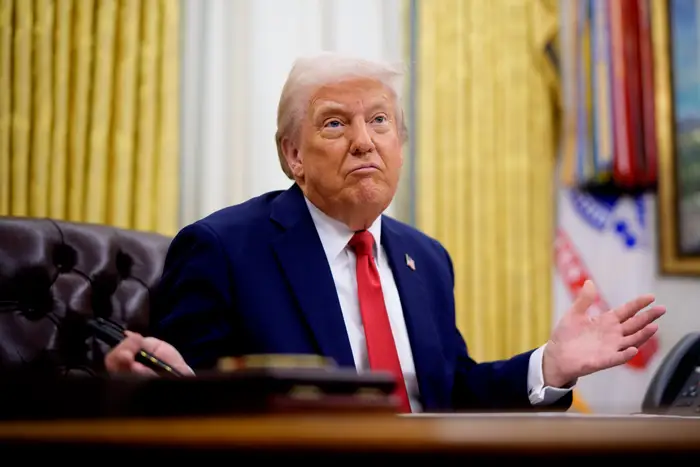A former NBA media exec explains how the league’s next rights deal could end up ‘pumping more money’ into player contracts

- Shirin Malkani is the NBA’s former SVP of global media distribution.
- She helped negotiate the league’s last media rights deal that tripled in value from the one before.
- Malkani said the upcoming deal and a possible streaming partner could drive historic player salaries.
During her time as an NBA executive, Shirin Malkani faced criticism from friends for negotiating the league’s digital and media rights deals, which resulted in large paydays for some players.
“I would have friends who would send me mean texts complaining about somebody who was injured or was a benchwarmer who they thought was drastically overpaid,” Malkani said in an interview with Insider. “They blamed me for the media-rights deals pumping more money into the system.”
From 2008 to 2015, Malkani was the league’s senior vice president of global media distribution, focusing on digital and media rights. She began working on the NBA’s current TV deal in 2014, which went into effect in 2016 and nearly tripled the value of the one before it — and has resulted in record-breaking player contracts.
She witnessed firsthand how the rising costs of sports rights drove NBA salary caps and player earnings to new heights.
With the NBA’s current contract expiring after the 2024-2025 season and many insiders, including Malkani, projecting a new agreement worth two or three times the current deal, players will be paid more than ever before.
“There is no product without them,” said Malkani, who now co-chairs Perkins Coie’s sports industry group.
She explained how the next NBA rights deal will affect athletes, as the value of sports rights skyrockets against the backdrop of collapsing regional sports networks and pay-TV bundles.
“Clearly, there are chinks in the armor,” said Malkani of the TV ecosystem. “Some things are accelerating faster than maybe some people would think about how things are going to shake out long-term between streaming and more traditional players.”
Media rights will bump up salary caps and give players a boost over time
Sports salary caps exist to level the playing field so that no team has an economic advantage in attracting all of the best players. Those who exceed a certain threshold must pay fines to the league. When the new rights agreement takes effect for the 2025-26 season, each team’s salary cap will be increased, putting more money in players’ pockets, according to Malkani.
What teams do with those new dollars is up to them, though issues like staying within or exceeding a salary cap will look different this year. This is because the league’s new seven-year collective bargaining agreement, or CBA, imposes harsher penalties on franchises that grossly exceed the salary cap.
The new rights agreement will raise salary caps, but only by 10% per year, according to the CBA.
The money will trickle down to players over time, but the rule is intended to prevent stars signing immediately after the new deal from receiving exorbitant contracts while those signing a few years later receive smaller ones, as was the case in 2016 when salary caps increased due to the media rights agreement.
In short, players will receive larger contracts as a result of the new rights agreement, but the cap smoothing guidelines will spread those increases out over time and with more players.
How streaming rights could trickle down to players
The NBA’s current licensing agreements with Disney and Warner Bros. Games are broadcast on ESPN, ABC, and TNT by Discovery. While many analysts and insiders, including Malkani, believe Disney and WBD will fight to keep the NBA, they also believe another streaming partner is unavoidable.
It’s just a matter of finding the right partner. Amazon, Apple, ESPN+, Peacock, Paramount+, YouTube TV, and Max have all begun exclusively streaming major live sports.
According to Malkini, of all the options, the tech titans would most likely put the most money in the league’s pockets because they have businesses outside of sports and entertainment that could fund them.
“All the likely suspects have plenty of free cash to put against this and have businesses outside of just sports to make money, and are interested in investing,” Malkani told reporters, “whether it’s because they have hardware to sell or merchandise to push or other content that they want you to engage with or ads to sell.”
Following the bankruptcy of Diamond Sports Group, which had deals with 16 NBA teams to air their games through its regional sports networks, some NBA teams are already establishing their own TV and streaming agreements in local markets. Kiswe has since signed deals with NBA teams such as the Phoenix Suns and the Utah Jazz, as well as the WNBA’s Mercury, and has launched direct-to-consumer services that allow fans to watch live games in the teams’ respective markets.
According to Malkani, the league is likely to replicate the hybrid model of traditional and streaming providers in order to increase the value of its next rights deal.
“That de facto means that more money is getting pumped into the system for player contracts,” Malkani said in a statement.





